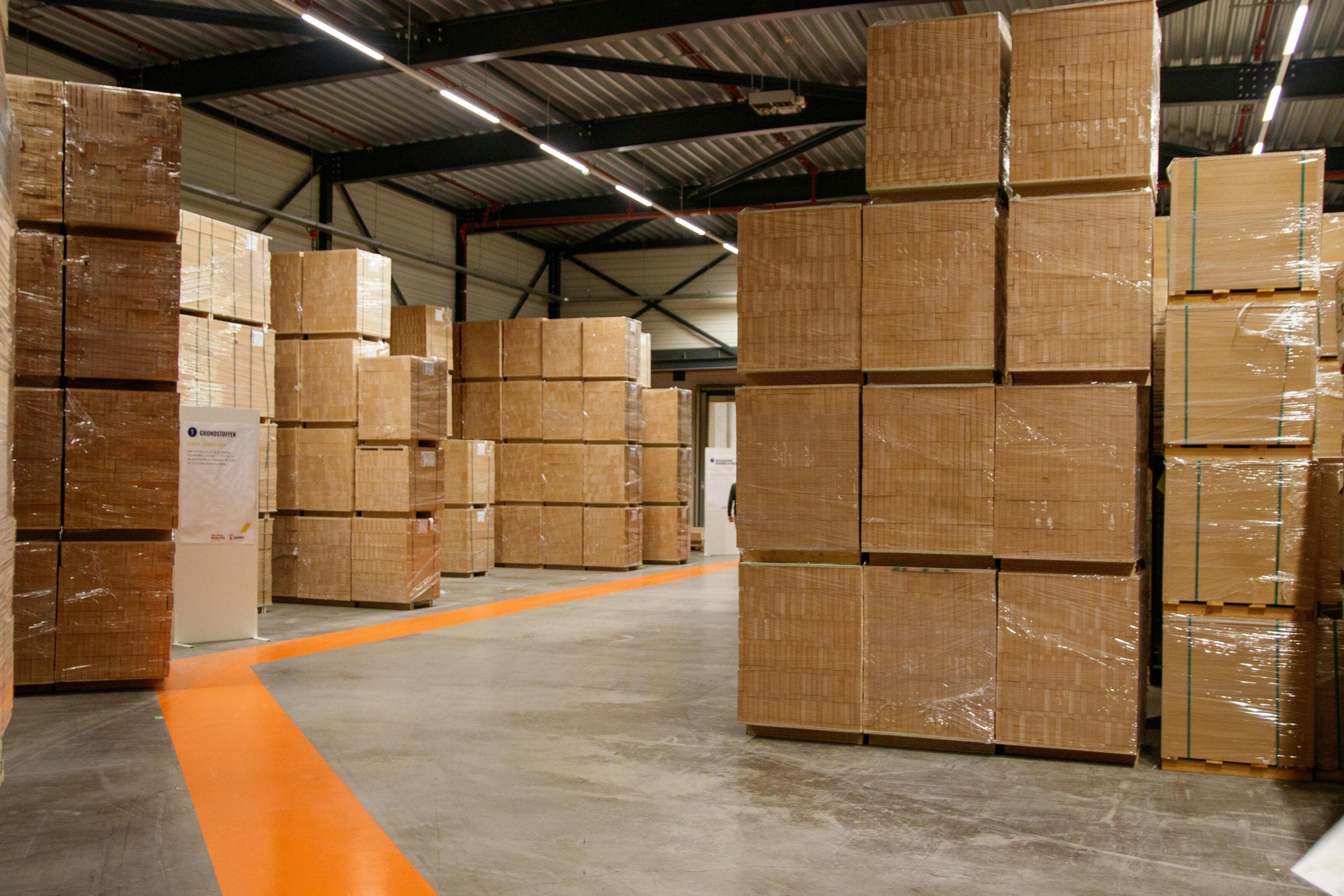The Future of Fashion Supply: Inside B2B Wholesale Clothing

In today’s fast-moving fashion economy, success isn’t defined only by what’s sold — it’s defined by how it’s sourced. Behind every thriving retail store, boutique, or online fashion platform lies a network of trusted B2B wholesale clothing suppliers driving the engine of global apparel distribution.
For decades, the B2B fashion wholesale model has quietly powered the retail industry. But with digital transformation, sustainability demands, and post-pandemic market shifts, this once-traditional sector is undergoing a revolution. Whether you’re a startup boutique owner, a large-scale retailer, or simply interested in how global apparel trade works, understanding how B2B wholesale clothing operates — and where it’s heading — is essential for long-term success.
What Does B2B Wholesale Clothing Mean?
B2B wholesale clothing refers to the sale of apparel and fashion items in bulk from one business to another — typically, from manufacturers or distributors to retailers. Unlike B2C (business-to-consumer) models where products are sold directly to individuals, the B2B approach emphasizes efficiency, scale, and partnership.
A retailer sourcing through a wholesale partner typically benefits from:
-
Bulk discounts and tiered pricing structures
-
Stable supply of inventory and trend-based assortments
-
Access to global manufacturers and private label opportunities
-
Better cost management through predictable margins
The model creates a symbiotic relationship where both supplier and retailer depend on one another’s stability and growth — a key factor that makes B2B wholesale unique in the global economy.
Why B2B Wholesale Clothing Is Evolving in 2025
1. The Digital Revolution in Fashion Supply Chains
Technology has transformed how clothing is sourced and sold. In 2025, B2B interactions are increasingly digital — with virtual showrooms, online ordering portals, and AI-powered forecasting tools making wholesale transactions faster and more transparent.
B2B marketplaces like Faire, Tundra, and FashionGo have made it easier for small retailers to connect directly with verified suppliers. Similarly, digital integration helps wholesalers analyze demand patterns, anticipate upcoming trends, and optimize production cycles.
2. Sustainability Is No Longer Optional
In the modern apparel landscape, sustainability has become a deciding factor in supplier selection. Wholesalers that prioritize eco-friendly fabrics, ethical labor practices, and carbon-conscious production are in high demand. Retailers increasingly want partners who align with their brand values — and consumers, too, are rewarding transparency.
Organic cotton, recycled polyester, and plant-based fabrics are no longer niche — they’re becoming the foundation of ethical wholesale clothing. The most successful B2B wholesalers are those embracing traceability and offering verified sustainability certifications such as GOTS or OEKO-TEX®.
3. The Rise of Micro-Brands and Boutique Retailers
As social media continues to democratize fashion, small independent brands are flourishing. Many of these micro-retailers rely heavily on B2B wholesale clothing networks to access affordable, trend-driven stock without the need for large in-house production.
This has led to a shift in how wholesalers operate — offering flexible minimum order quantities (MOQs), faster restocks, and private-label customization options tailored for smaller businesses.
4. Resilience Through Diversification
The pandemic exposed vulnerabilities in global supply chains. Since then, B2B wholesalers have diversified sourcing across multiple regions — combining the efficiency of Asian manufacturing hubs with the agility of nearshore production in countries like Turkey, Portugal, and the UK.
This hybrid model ensures continuity while allowing for rapid adaptation to market changes — a critical advantage in the fashion industry’s unpredictable cycles.
The Structure of a Successful B2B Wholesale Clothing Business
1. Product Range and Quality Consistency
A strong wholesale partner provides not just variety, but consistency. From fabric durability to size accuracy, quality assurance is vital for retailers to maintain brand trust. Many wholesalers now use automated quality control systems and digital fabric testing to guarantee uniform standards.
2. Transparent Pricing and Flexible Terms
In modern wholesale, transparency wins trust. Retailers expect clear pricing structures, honest shipping costs, and fair return policies. Flexible payment terms — such as partial deposits or credit arrangements — strengthen B2B relationships and encourage repeat business.
3. Data-Driven Inventory Planning
Leading B2B wholesalers use predictive analytics to monitor real-time sales data and adjust production accordingly. This minimizes waste, reduces overstocking, and keeps product assortments aligned with consumer demand.
4. Global Compliance and Certifications
With stricter import regulations and ethical trade policies worldwide, compliance is non-negotiable. Suppliers offering verified certifications — like WRAP, ISO 9001, or Fair Trade — stand out as reliable long-term partners.
Emerging Trends Shaping the B2B Wholesale Clothing Market
Digital Marketplaces and Smart Integration
The shift to online B2B platforms has revolutionized accessibility. Retailers can now browse thousands of suppliers, compare pricing, and place bulk orders with a few clicks. Integration with ERP (Enterprise Resource Planning) systems ensures seamless order tracking, stock management, and automated invoicing.
Demand for Private Label Manufacturing
Private labeling — where retailers rebrand generic products with their own logo and tags — is growing rapidly. It allows small businesses to create a unique brand identity without the high costs of full-scale production. Wholesalers offering design customization and packaging support gain a competitive edge.
Sustainability as a Selling Point
Eco-conscious collections are now a major differentiator. B2B suppliers who incorporate sustainable dyeing techniques, biodegradable packaging, and carbon-neutral shipping are setting the new industry standard.
Dropshipping Integration
An increasing number of wholesalers offer B2B dropshipping solutions, allowing retailers to sell products without holding physical stock. This hybrid model supports eCommerce entrepreneurs who want to scale without heavy upfront investment.
Technology-Enhanced Transparency
Blockchain technology and digital labeling now enable retailers to trace garments from factory to store shelf — improving trust, reducing counterfeits, and aligning with consumer demands for ethical accountability.
Benefits of Building Strong B2B Wholesale Partnerships
-
Cost Efficiency: Bulk buying reduces per-unit costs and maximizes profit margins.
-
Reliability: Established wholesalers ensure product availability and consistency.
-
Customization: Access to bespoke designs, fabrics, and packaging enhances brand differentiation.
-
Global Reach: Reliable networks allow expansion into international markets with minimal friction.
-
Agility: Adapt quickly to trend shifts without overcommitting to risky inventory.
How Retailers Can Thrive in the B2B Clothing Ecosystem
Research Before You Commit
Always vet suppliers. Check customer reviews, sample quality, and production timelines before signing contracts. A quick supplier check can save months of operational headaches.
Focus on Long-Term Collaboration
Partnerships built on mutual trust and consistent communication lead to better pricing, early access to new styles, and shared insights into market trends.
Keep Up with Technology
Use inventory management software, data analytics tools, and integrated B2B platforms to optimize order cycles and track performance metrics.
Embrace Sustainability
Consumers notice. Partnering with wholesalers that follow sustainable production practices strengthens your brand story and customer loyalty.
The Road Ahead: What’s Next for B2B Wholesale Clothing
As global fashion continues to evolve, B2B wholesale clothing will remain a cornerstone of the industry — but one redefined by innovation, ethics, and digital transformation.
The next few years will likely see the rise of “smart wholesale” — where technology-driven decisions, circular production models, and consumer-centric forecasting dominate. The winners in this space will be those who see wholesale not just as a transaction, but as a long-term ecosystem built on transparency and collaboration.
In short, the future of B2B fashion wholesale is not about selling more; it’s about selling smarter.
Conclusion
B2B wholesale clothing forms the invisible backbone of the modern apparel industry. It connects creativity with commerce, supply with demand, and brands with consumers worldwide. As the landscape grows more interconnected and sustainability-focused, businesses that adapt to these new realities will thrive.
Whether you’re sourcing your first collection or scaling an established fashion label, success lies in forging relationships with suppliers who share your vision — those who see fashion not just as garments, but as a global dialogue between innovation, responsibility, and opportunity.


